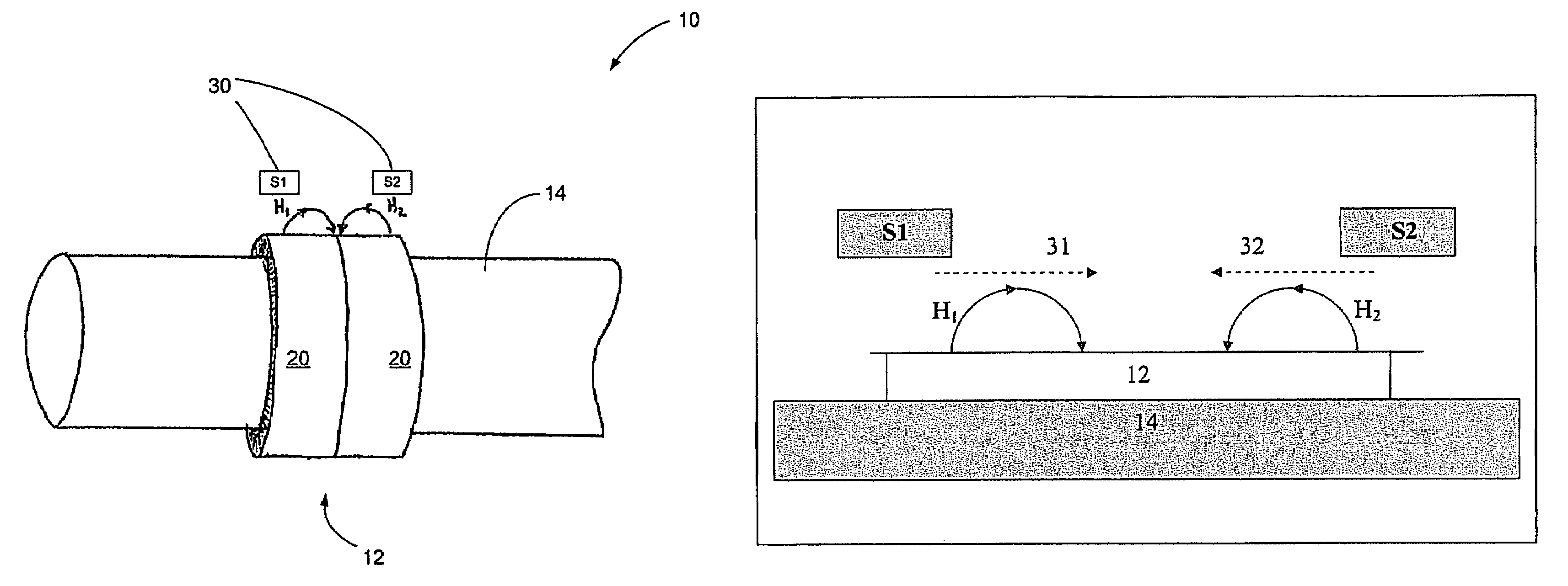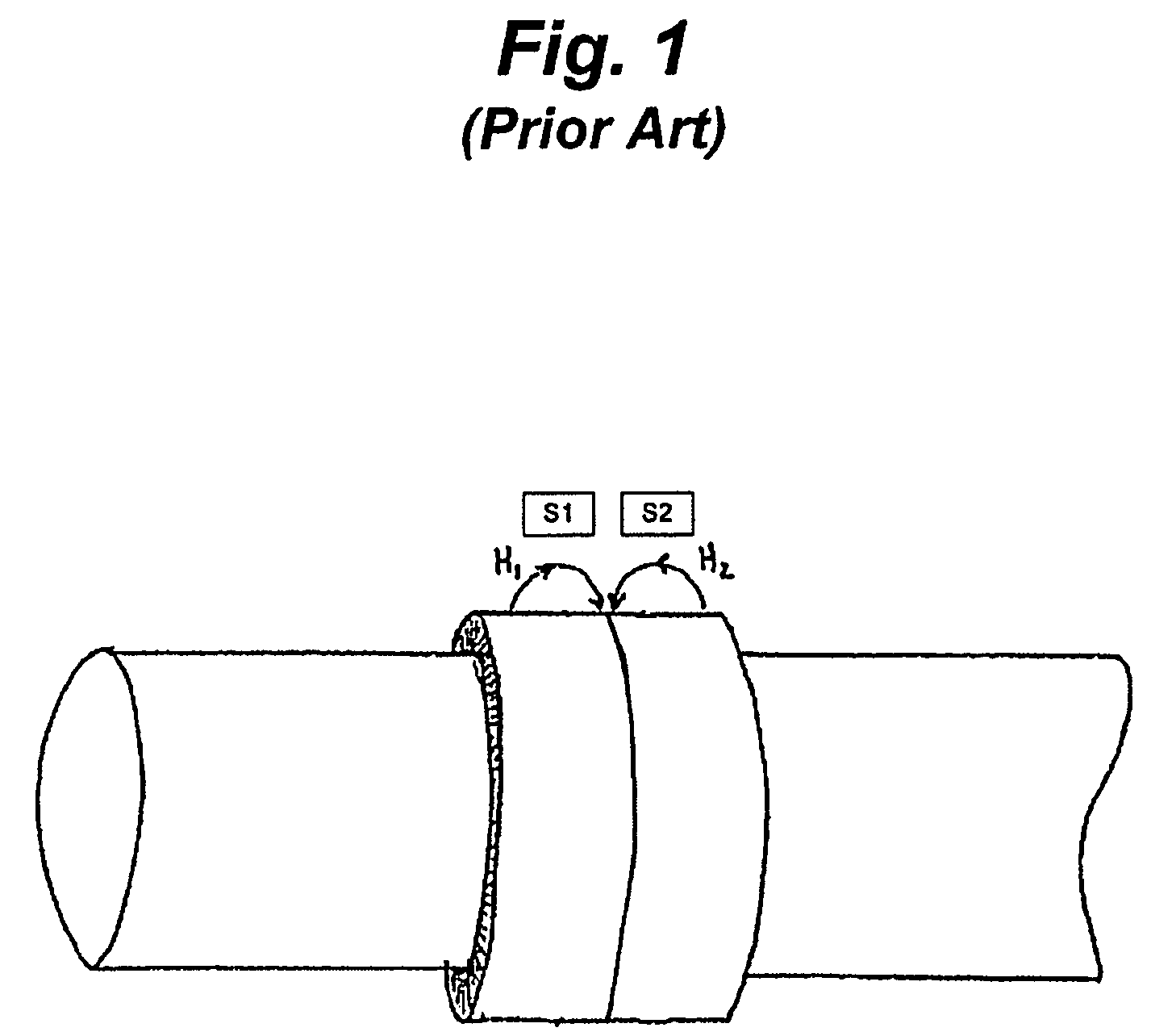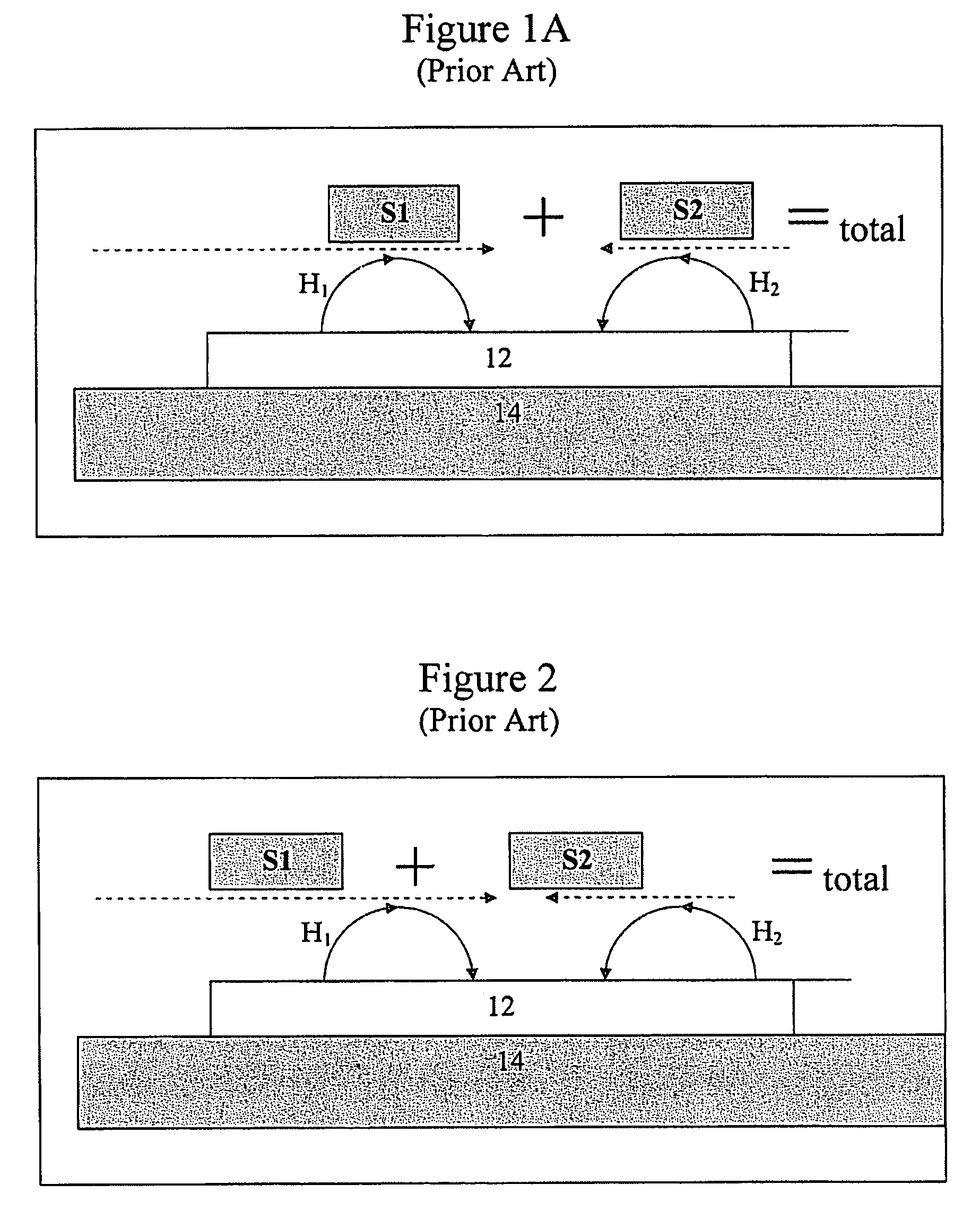Reduced axial movement error in a torque-sensing system
a torque sensing system and axial movement technology, applied in the field of magnetic sensors, can solve the problems of reducing increasing the tendency for torque reading errors, and affecting the accuracy of torque readings, so as to reduce the amount of torque reading errors
- Summary
- Abstract
- Description
- Claims
- Application Information
AI Technical Summary
Benefits of technology
Problems solved by technology
Method used
Image
Examples
Embodiment Construction
[0017]As shown in FIGS. 3 and 3A, an improved sensor arrangement 10 includes a magnetoelastic ring 12 press-fit onto a rotatable shaft 14 to which a torque may be applied. The ring 12 generally has a cylindrical shape with two magnetic bands 20 that are magnetized in opposite directions, producing magnetic fields H1 and H2. Alternatively, the rotatable shaft 14 could be magnetized into bands, eliminating the need for a magnetoelastic ring. Magnetic field sensors 30 positioned next to, but not contacting, the bands 20, can be used to measure the field strength along the axial direction, which can be converted to torque. The sensors 30 are positioned to either side of the peak axial field strength areas of the bands 20 so that when the magnetic fields H1 and H2 move (due to movement of the shaft 14 or ring 12), the average change in the reading is limited. One sensor, S1, has sensitivity in the direction of arrow 31 and is offset from the center of one band in a first direction, and t...
PUM
| Property | Measurement | Unit |
|---|---|---|
| torque | aaaaa | aaaaa |
| magnetic field | aaaaa | aaaaa |
| field strength | aaaaa | aaaaa |
Abstract
Description
Claims
Application Information
 Login to View More
Login to View More - R&D
- Intellectual Property
- Life Sciences
- Materials
- Tech Scout
- Unparalleled Data Quality
- Higher Quality Content
- 60% Fewer Hallucinations
Browse by: Latest US Patents, China's latest patents, Technical Efficacy Thesaurus, Application Domain, Technology Topic, Popular Technical Reports.
© 2025 PatSnap. All rights reserved.Legal|Privacy policy|Modern Slavery Act Transparency Statement|Sitemap|About US| Contact US: help@patsnap.com



